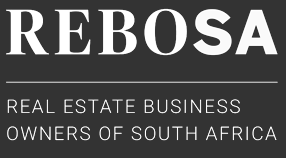People, places and spaces - consumer trends and the property market
Every year Euromonitor International identifies their Top 10 Global Consumer Trends. The report looks to the "emerging and fast-moving trends" anticipated to gain traction in the year ahead.
"Given the unprecedented nature of 2020, it is interesting to look at what the experts reckon is in store for this year - with some trepidation, of course," says Silvana dos Reis Marques, Franchisee at Leapfrog Pretoria East and Irene.
As we acclimatise to the way the coronavirus pandemic has changed the world - for better, and worse - consumer trends are relevant because consumer values and behaviour ultimately have a far-reaching impact on business.
According to the report, "resilience and adaptability are the driving forces behind the top global consumer trends in 2021" and all of them were created, influenced or accelerated by Covid-19 in some way.
"We (at Leapfrog) can't help but view some of these trends through the property lens. Considering the surge in first-time home buyers that we've been seeing since mid-2020, greatly due to the record-low interest rate, and the fact that the home has become the central focus of our lives, these trends are particularly relevant," Dos Reis Marques shares.
Four of the ten trends are particularly relevant to the property and worth taking a closer look at, in no particular order.
Craving convenience
The authors of the report talk about consumers "longing for the ease taken for granted before daily habits were upended" and finding this convenience and flexibility through various digital channels.
"We know, from both research and anecdotally, that the pandemic accelerated digital adoption, and it was no different for the property selector. Agents were forced to better utilise the tech at our disposal to ensure we offer clients the same level of service, the same experience, online as we do in an analogue world," Dos Reis Marques shares.
Phygital reality
The "phygital reality" the report refers to is where physical and digital worlds collide, and includes the widespread use of digital tools to stay connected, personally and professionally, in a seamless way.
Dos Reis Marques says: "The client's experience of property also needs to be seamless. It's not about whether the viewing is virtual or in-person, it's about offering the same quality experience in both, and ensuring all relevant information and content is readily available in both ways. Increasingly our tech allows us to make this kind of experience an everyday reality."
Outdoor oasis
Unsurprisingly, consumers are seeking open-air experiences. This is no doubt to escape the constraints associated with being home more, but also has the safer alternative to gathering in densely-populated spaces.
"Yes, buyers are looking for properties with bigger gardens or some form of 'outdoor oasis' as something that makes it possible to connect with the outside on a daily basis," Dos Reis Marques explains. She adds that there has also been a small but noticeable interest from clients in moving from busy city centres to quieter suburban areas and even to rural towns where living closer to nature is a way of life.
Workplaces in new spaces
With remote work unlikely to leave the scene anytime soon, it's causing people to carefully consider the space in which they work... at home. This also means, according to the report, that consumers are seeking ways to signal the start and end of the workday, which traditionally has been the arrival and departure of a physical space.
"More and more we see people looking for properties that offer a space that can be used exclusively for work, a home office essentially," Dos Reis Marques says. The current interest rate certainly makes it possible for more people to afford more space, which also adds value to their property portfolio.
28 Jan 2021
Author Leapfrog Property Group




